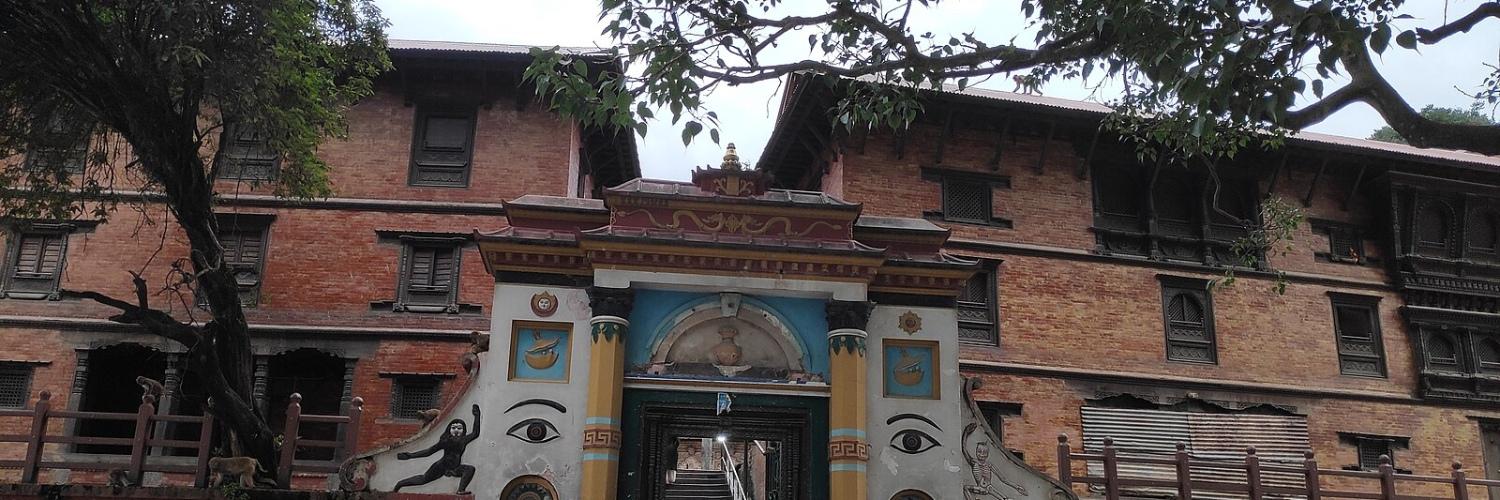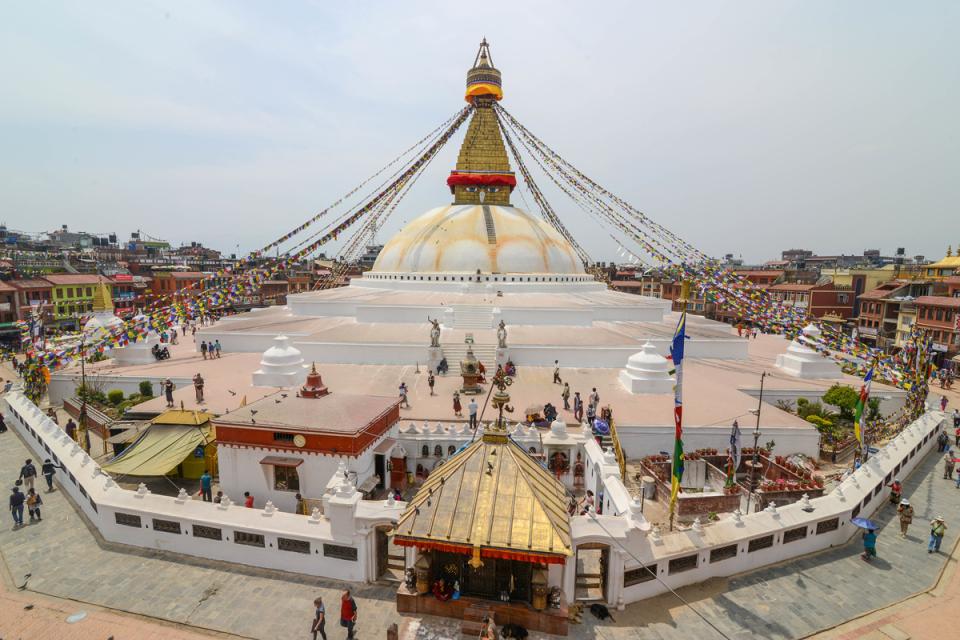Kathmandu, the vibrant capital of Nepal, is well known for its sacred temples, ancient traditions, and deep spiritual energy. Among its many religious landmarks, the Guhyeshwari Temple stands out as a profoundly significant site for Hindu devotees, especially those from India seeking divine blessings and spiritual connection.
Located close to the famous Pashupatinath Temple, Guhyeshwari is not just another shrine. It is one of the most important Shakti Peethas in Nepal, where the goddess Sati’s energy is believed to dwell eternally. This temple holds special reverence among older pilgrims, spiritual travelers, and cultural seekers who believe in the power of the divine feminine.
This blog delves into the mystical origins, historical relevance, spiritual symbolism, and travel details of Guhyeshwari Temple, guiding you on how to make the most of your visit.
What is Guhyeshwari Temple?
Guhyeshwari Temple is a revered Hindu temple dedicated to Goddess Guhyeshwari, considered a manifestation of Goddess Parvati or Sati. The temple's name stems from “Guhya,” meaning secret or inner, and “Ishwari,” meaning goddess. Together, the name implies the “Secret Goddess” or “Hidden Power,” representing the inner spiritual energy that guides transformation, healing, and liberation.
This sacred shrine is nestled on the banks of the holy Bagmati River, just a short distance away from the Pashupatinath Temple, forming a spiritual duo that many believe cannot be separated. For followers of Tantric practices, the temple holds even deeper esoteric meaning, as a site for powerful rituals and sadhanas.
Guhyeshwari Temple: A Revered Shakti Peeth in Nepal
Among the 51 ancient Shakti Peethas spread across the Indian subcontinent, Guhyeshwari Temple in Nepal holds a special place. According to sacred texts, Sati Devi, the first spouse of Lord Shiva, immolated herself in protest of her father Daksha’s insult toward her husband. Overwhelmed by sorrow, Lord Shiva wandered the world carrying her body.
To restore balance, Lord Vishnu used his Sudarshan Chakra to dismember Sati’s body, and each spot where a piece fell became a Shakti Peetha - a center of cosmic energy. At Guhyeshwari, it is believed that Sati’s hips or yoni (depending on tradition) fell, symbolizing the source of feminine creation and sacred power.
This belief elevates Guhyeshwari from being just a place of worship to a living spiritual energy center, attracting thousands of pilgrims each year, especially during festivals and auspicious days.
Guhyeshwari and Pashupatinath: Twin Pillars of Devotion
For devout Hindus, Shiva and Shakti are inseparable - two cosmic energies that together create, preserve, and destroy the universe. This deep-rooted concept is beautifully reflected in the close proximity of Guhyeshwari Temple and Pashupatinath Temple.
While Pashupatinath stands as a powerful symbol of Lord Shiva’s masculine energy, Guhyeshwari represents the nurturing, creative force of the Goddess. Many pilgrims strongly believe that a pilgrimage to Pashupatinath is incomplete without paying homage to Guhyeshwari. It is said that only by honoring both aspects - Shiva and Shakti - can one achieve true spiritual fulfillment.
As a result, most Indian pilgrims visiting Kathmandu for religious reasons follow this spiritual sequence - first performing puja at Pashupatinath and then proceeding to Guhyeshwari to complete the divine cycle.
Guhyeshwari Temple History: A Spiritual and Cultural Chronicle
The origins of the Guhyeshwari Temple are shrouded in mysticism, but historical accounts trace its current form to the 17th century. It was King Pratap Malla, a visionary ruler of Kathmandu and a patron of Hinduism, who commissioned the temple’s reconstruction, giving it the form it retains today.
Even before that, the temple site was associated with ancient Tantric practitioners, yoginis, and siddhas, who meditated here seeking the blessings of the goddess. Over the centuries, Guhyeshwari evolved into a significant spiritual and cultural epicenter where rituals and esoteric practices continue to this day.
The temple also finds mention in many Hindu scriptures and Puranas, particularly in the context of Shakti worship, highlighting its timeless importance.
Guhyeshwari Temple Architecture and Sacred Elements
Though humble in size compared to monumental Indian temples, Guhyeshwari Temple’s architecture carries profound spiritual symbolism. Built in traditional Newari pagoda style, the temple features a tiered roof, golden finials, and exquisitely carved wooden struts that depict deities and tantric motifs.
The most remarkable aspect lies inside the garbhagriha (sanctum sanctorum) - where instead of a stone or metal idol, the goddess is represented through a kalasha, or sacred water pot. This symbolizes the womb of creation, aligning perfectly with the temple’s Tantric and feminine essence.
A serene courtyard, sacred bells, and the ever-flowing Bagmati River in the background add to the tranquil yet spiritually charged ambiance that devotees feel deeply.
Rituals, Festivals, and Ceremonies
Daily Puja and Offerings
Every day, priests conduct rituals that include chanting, lighting ghee lamps, offering red flowers, vermillion, and other symbols of feminine divinity. Women often visit to pray for fertility, family harmony, and spiritual blessings.
Navratri Celebrations
The Navratri festival, dedicated to Goddess Durga, transforms Guhyeshwari into a festive and devotional hub. The temple is adorned with flowers, lights, and vibrant decorations. Devotees from India and Nepal flock here to offer special pujas and seek the goddess’s favor during these nine auspicious nights.
Maha Shivaratri
During Maha Shivaratri, when thousands gather at Pashupatinath, many also visit Guhyeshwari to honor the feminine force of Shiva’s consort, creating a harmonious balance of worship.
Why Guhyeshwari Temple is Important for Hindu Indian Devotees
For Indian Hindus, especially from states like Uttar Pradesh, Bihar, Bengal, Gujarat, and Tamil Nadu, visiting Shakti Peethas is an integral part of their spiritual journey. Just as Kamakhya (Assam), Vaishno Devi (Jammu), or Kanchipuram (Tamil Nadu) are revered, Guhyeshwari Temple is equally significant.
Many elderly devotees plan Nepal yatra tours to include this temple, along with Muktinath, Pashupatinath, and even Kailash Manasarovar - making Guhyeshwari a spiritually strategic stop.
For pilgrims looking for inner healing, moksha (liberation), or to perform rituals in memory of ancestors, Guhyeshwari offers a sacred, serene environment away from crowds.
Spiritual Benefits of Visiting Guhyeshwari Temple
-
Feminine Energy Activation: Connects devotees with the inner power of Shakti for transformation and clarity.
-
Fulfills Vows and Prayers: Many visit to fulfill mannat (wishes) or offer gratitude for blessings received.
-
Karmic Cleansing: Rituals by the Bagmati River help in spiritual purification and peace.
-
Enhanced Meditative State: Tantric practitioners report deep meditative experiences at this site.
How to Reach Guhyeshwari Temple, Kathmandu
By Air:
Fly from Indian cities like Delhi, Varanasi, Kolkata, or Bangalore to Tribhuvan International Airport, Kathmandu. From the airport, the temple is a short 15-20 minute drive.
By Road:
Buses and taxis are available from Gorakhpur, Raxaul, and Sunauli border points. Many Indian pilgrims choose group tours or private religious tours with trusted operators like Best Heritage Tour.
Once in Kathmandu, you can easily reach Guhyeshwari by hiring a local cab, cycle rickshaw, or guided temple walk.
Travel Tips for Indian Pilgrims and Religious Travelers
-
Carry valid identification and currency exchange for ease.
-
Visit the temple early in the morning for a peaceful darshan.
-
Don’t miss nearby Pashupatinath Temple, just a 10-minute walk away.
-
Photography inside the inner sanctum is restricted, so be respectful.
-
Elderly travelers should consider guided tours for smoother mobility and support.
Combine Guhyeshwari with a Spiritual Tour
To make the most of your Nepal pilgrimage, combine your visit to Guhyeshwari Temple with:
-
Pashupatinath Temple - One of the holiest Shiva temples in the world.
-
Budhanilkantha - Home to the magnificent reclining Vishnu statue.
-
Swayambhunath and Boudhanath - Important Buddhist spiritual centers.
-
Dakshinkali Temple - Another form of Goddess Kali revered by Tantric practitioners.
Conclusion: A Call to the Sacred
Whether you're a devout Hindu from India, a spiritual seeker, or a cultural pilgrim, the experience of Guhyeshwari Temple is one that stays in your heart forever. It offers divine feminine energy, mythological depth, and an opportunity to connect with the ancient power of the Himalayas.
To ensure your visit is comfortable, guided, and deeply spiritual, choose a trusted travel partner like Best Heritage Tour who understands both rituals and logistics.
Contact Best Heritage Tour
Website: www.bestheritagetour.com
Email: info@bestheritagetour.com / bestheritagetour@gmail.com
Phone: +977-9851149197
Location: Thamel Marg, Kathmandu Nepal
Let Best Heritage Tour guide your sacred journey through Nepal's most powerful temples - with faith, care, and experience.
Author: Best Heritage Tour
Date: 23rd July, 2025


